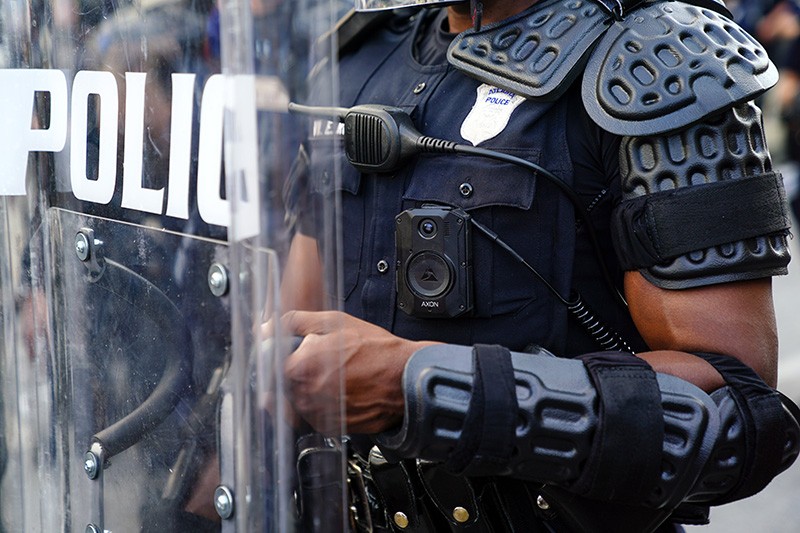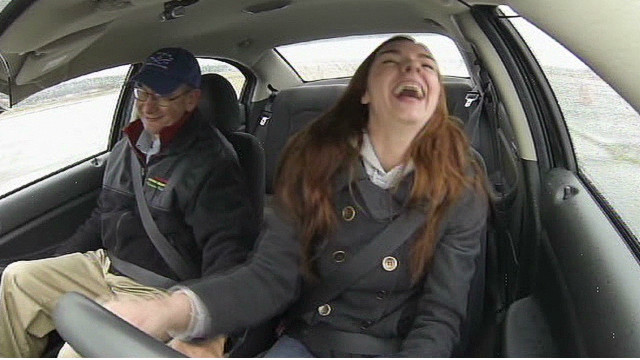
In Lowry v. City of San Diego, the Ninth Circuit held that City of San Diego’s policy of training its police dogs to “bite and hold” individuals resulted in a violation of plaintiff’s Fourth Amendment rights.
After a night of drinking with her friends, Sara Lowry returned to her workplace and fell asleep on her office couch. She awoke a short while later and went to the bathroom, before returning to her couch and going back to sleep. Unfortunately for Lowry, during her trip to the bathroom, she accidentally triggered the building’s burglar alarm. Several officers from the San Diego Police Department (“SDPD”) responded, accompanied by a police service dog named Bak. After searching the area and giving several warnings, the officers released Bak into Lowry’s office. Bak found Lowry and pounced on her, tearing open her upper lip.
Lowry filed suit against the City of San Diego (the “City”) under 42 U.S.C. § 1983, alleging that the City’s policy of training its police dogs to “bite and hold” individuals resulted in a violation of her Fourth Amendment rights. The district court granted the City’s motion for summary judgment, concluding both that Lowry did not suffer constitutional harm and that, even if she did, the City was not liable for her injuries.
The Ninth Circuit decided that a reasonable jury could find that the police officers responding to the alarm used excessive force when they deliberately unleashed a police dog that they knew might well “rip the face off” any individual who might be present in the office. They also decided that the force used was excessive and that the City was liable.
The Court reasoned that the SDPD trains its police dogs to enter a building, find a person, bite them, and hold that bite until a police officer arrives and removes the dog. However, police dogs are not trained to differentiate between “a young child asleep or . . . a burglar standing in the kitchen with a butcher knife,” and will simply bite the first person they find.
Generally, the decision of whether to conduct a canine search on or off its leash is left to the officer’s discretion. However, the SDPD’s Canine Unit Operations Manual provides that residential searches “should normally be conducted on-lead unless the handler can reasonably determine there are no residents or animals in the home.”
The Court further reasoned that objectively unreasonable uses of force violate the Fourth Amendment’s guarantee against unreasonable seizures. Our excessive force analysis under Graham v. Connor involves three steps. First, we must assess the severity of the intrusion on the individual’s Fourth Amendment rights by evaluating the type and amount of force inflicted. Second, we evaluate the government’s interest in the use of force. Finally, we balance the gravity of the intrusion on the individual against the government’s need for that intrusion.
Here, under these circumstances, the Ninth Circuit found that a reasonable juror could conclude that releasing Bak into the suite posed a high risk of severe harm to any individual present. Additionally, the officers would not have been justified in believing that Lowry posed a threat to their safety or to others. Throughout the entire encounter, until she was bitten by Bak, Lowry remained fast asleep on the couch. Lowry did not engage in any threatening behavior, nor do anything other than lie quietly before she was bit in the face. Finally, a non-residential burglary is not an inherently dangerous crime, and the fact that an unarmed suspect has broken into a dwelling at night does not automatically mean she is physically dangerous.
Given that there is no dispute that the City’s “bite and hold policy” was the moving force behind Lowry’s constitutional injuries, the City was not entitled to dismissal under summary judgment. With that, the Ninth Circuit reversed and remanded this case for further proceedings.
Good decision.
Please contact my office if you, a friend or family member are charged with a crime. Hiring an effective and competent defense attorney is the first and best step toward justice.















